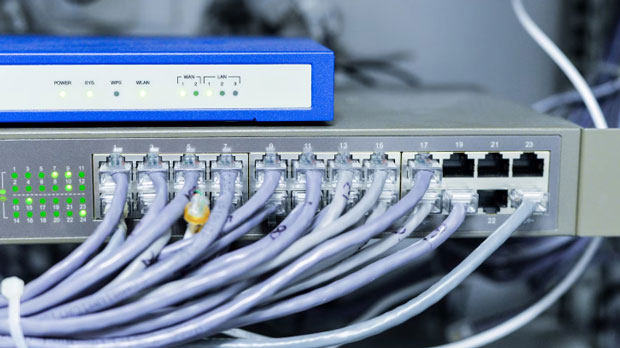The increasing demand for streaming services has led many to seek out tools to bypass geographic restrictions or access content that may otherwise be unavailable. Proxies like CroxyProxy and PYPROXY are often considered in this context. However, when it comes to streaming, not all proxies are created equal. CroxyProxy, which is a widely-used proxy service, may not provide the best experience for accessing streaming media. On the other hand, PyProxy may offer more advantages in terms of speed, reliability, and performance. In this article, we will compare both proxies, analyze their pros and cons, and determine which one is more suitable for streaming media access. Introduction: The Importance of Choosing the Right Proxy for StreamingAs the digital landscape evolves, streaming media platforms such as movies, TV shows, sports, and music have become central to entertainment worldwide. Unfortunately, content on streaming platforms is often geo-restricted, meaning that users in certain countries or regions cannot access specific content. In such cases, proxies offer a solution by enabling users to mask their real IP addresses and access content from different locations.However, not all proxies are equipped to handle the specific demands of streaming media. Streaming requires high-speed connections, minimal buffering, and stable performance. For this reason, choosing the right proxy becomes crucial. In this article, we will look at two popular proxy services—CroxyProxy and PyProxy—and determine which one is more suited for accessing streaming media.1. CroxyProxy: Overview and Performance AnalysisCroxyProxy is a free web proxy service that allows users to access websites and streaming content from different regions. It works by routing web traffic through its own servers, effectively masking the user's original IP address. While CroxyProxy can work for streaming services, its limitations may become apparent in certain situations.1.1. Speed and ReliabilityOne of the most important factors in streaming is speed. CroxyProxy, being a free service, tends to have slower speeds compared to paid proxies. Streaming high-definition content requires a consistent and high-speed internet connection, which may be challenging when using CroxyProxy. The proxy service is more suited for light browsing and casual media consumption, but it may struggle with bandwidth-heavy streaming.Furthermore, CroxyProxy's free service can sometimes experience downtime or congestion, which could negatively affect the streaming experience. This may lead to buffering, slow loading times, or even interruptions in the video stream.1.2. Compatibility with Streaming PlatformsCroxyProxy can work with some streaming platforms, but compatibility can be an issue. Some streaming services actively block proxies to prevent unauthorized access, and CroxyProxy may not bypass these restrictions efficiently. This is particularly problematic for users who want to access platforms like Netflix, Hulu, or BBC iPlayer.Additionally, CroxyProxy does not offer advanced features like region-specific IP addresses, which are essential for accessing geo-blocked content. The lack of such features limits its use for those who want to unblock a wide range of streaming media services.2. PyProxy: A Better Alternative for Streaming?PyProxy is another proxy service, and it may provide a better option for streaming media. Unlike CroxyProxy, which primarily focuses on web browsing, PyProxy is known for its faster speeds and better performance for streaming tasks.2.1. Speed and StabilityPyProxy is designed with performance in mind. It supports faster speeds, which are essential for smooth streaming experiences. The service offers higher bandwidth, meaning users are less likely to experience buffering or lag, especially when accessing HD content. While PyProxy may not match the speed of premium, paid proxy services, it does offer a better experience compared to free services like CroxyProxy. This makes PyProxy a more reliable choice for streaming media, especially when watching movies or TV shows in high resolution.2.2. Compatibility and Geo-UnblockingPyProxy excels at bypassing geographic restrictions, making it a useful tool for accessing streaming content that is unavailable in certain regions. PyProxy is often more effective at unblocking a broader range of platforms compared to CroxyProxy. It can help users access popular streaming services like Netflix, YouTube, or other international content providers without restrictions.Additionally, PyProxy offers the flexibility to use various IP addresses from different regions, allowing users to access content that would otherwise be blocked based on their geographical location. This feature is especially useful for accessing media from countries that have strict censorship laws or regional licensing agreements.2.3. Security and PrivacyStreaming proxies need to ensure users' security and privacy while they are accessing content. While both CroxyProxy and PyProxy offer basic anonymity features, PyProxy tends to offer better privacy protection for users. PyProxy typically encrypts data transmissions, ensuring that users' personal information and online activities remain secure.In contrast, CroxyProxy, being a free service, may not always guarantee the same level of privacy. Users of free proxy services should be cautious about potential data leaks or compromises in security.3. Comparing CroxyProxy and PyProxy for Streaming Media Access3.1. Speed and Streaming QualityFor streaming, speed is a critical factor. While CroxyProxy may work well for light browsing and occasional media consumption, it falls short for high-quality streaming. Its slower speeds and limited bandwidth make it less ideal for buffering-free experiences, especially when watching high-definition content.On the other hand, PyProxy offers better performance, providing faster speeds and more reliable connections. This makes it a better choice for those who want uninterrupted streaming experiences, particularly when accessing HD or 4K content.3.2. Access to Geo-Blocked ContentWhen it comes to accessing geo-blocked content, PyProxy stands out. With its ability to offer different IP addresses from various regions, PyProxy allows users to bypass regional restrictions on streaming platforms effectively. CroxyProxy, while functional in some cases, is not as adept at unblocking content from all platforms, limiting its effectiveness.3.3. Cost and ValueCroxyProxy is free, which may seem appealing to those looking to save money. However, the service's limitations in speed, stability, and compatibility with streaming services may make it less of a value in the long run. For users who require a reliable and smooth streaming experience, investing in a service like PyProxy could provide better value despite its potential costs.Conclusion: Which Proxy is Better for Streaming Media?While both CroxyProxy and PyProxy offer proxy services, they have different strengths and weaknesses when it comes to streaming media. CroxyProxy is a viable option for basic web browsing but falls short in terms of streaming performance. Its slower speeds, limited compatibility, and lack of advanced features make it less suitable for accessing high-quality, geo-restricted streaming content.PyProxy, on the other hand, offers better speed, more reliable connections, and superior geo-unblocking capabilities, making it the better choice for those looking to stream content from different regions. While it may not be perfect, it is a more reliable option for accessing streaming media and offers better value for users who need consistent and high-quality streaming experiences.
Mar 21, 2025
![arrow]()



























































